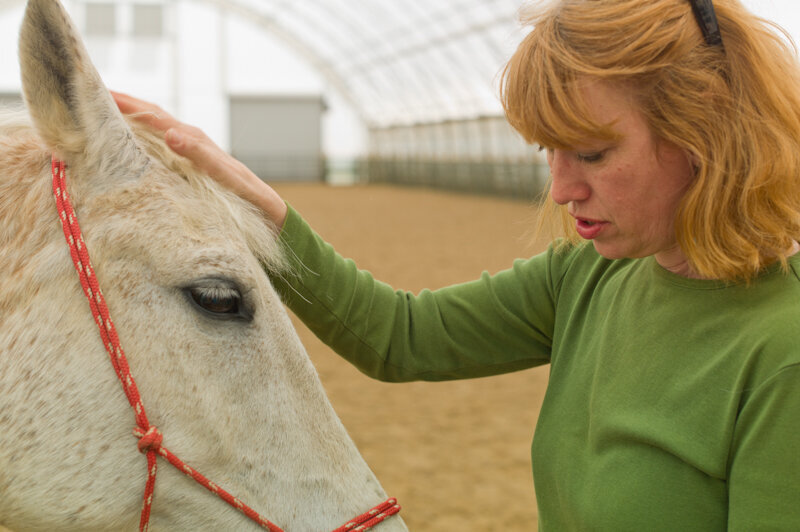
“Horseback riding is a form of communication between the horse and the rider. Horses are aware of and respond to the tension we hold in our bodies that we ourselves might not even be aware of.”
Riding With The Whole Self
Do you wish you could ride without pain?
Are there things your teacher asks you to do that you just can’t seem to get no matter how hard you try?
Does your horse suffer from discomfort when you ride?
Would you like to be able to give clearer yet more subtle aids?
Would you like to have an efficient and quick way to warm up yourself and your horse?
Horseback riding is a form of communication between the horse and the rider. Horses are aware of and respond to the tension we hold in our bodies that we ourselves might not even be aware of. Something as simple as holding tightness in one’s jaw and have an effect throughout our entire bodies. The horse senses this and responds in a way that neither the rider or instructor wants.
By teaching riders to become aware of their own patterns of tension and unnecessary effort, not only does the rider feel more relaxed and softer in their seat, but the horse feels that as well which results in a healthier riding experience and better performance.
I have designed a generalized series of lessons in Riding With The Whole Self that apply to the most common patterns of muscular tension that cause miscommunication between the horse and rider. Eight of these lessons have been recorded in an Audio CD set ‘Riding with the Whole Self’ available through this website as CDs or downloads through https://achievingexcellence.com/riding-with-the-whole-self/ or cdbaby.com/cd/pariskern to listen to an audio sample.
Clinics
Paris designs Riding With the Whole Self clinics to fit the level and individual interests of the participants. Clinics can be as short as one day or as long as 4 days or more. Some clinics will be mostly mounted, some mostly unmounted.
There are certain pedagogical aspects that remain constant regardless of the format. All clinics begin with unmounted Awareness Through Movement lessons. You must first learn to feel yourself before you can learn to feel yourself AND the horse. Learn to use power from the pelvis and the back to create light arms and hands. Become aware of asymmetrical self-use and learn the skills needed to self-correct.
Clinics may include brief private mounted lessons and private Functional Integration lessons. Another emphasis can be working to discover the root of individual horse’s difficulties
These clinics can be helpful for riders who want to improve their riding or who have injuries or pain. They are also designed for riding teachers who would like new tools to help their students and also for Feldenkrais practitioners who work with riders.
